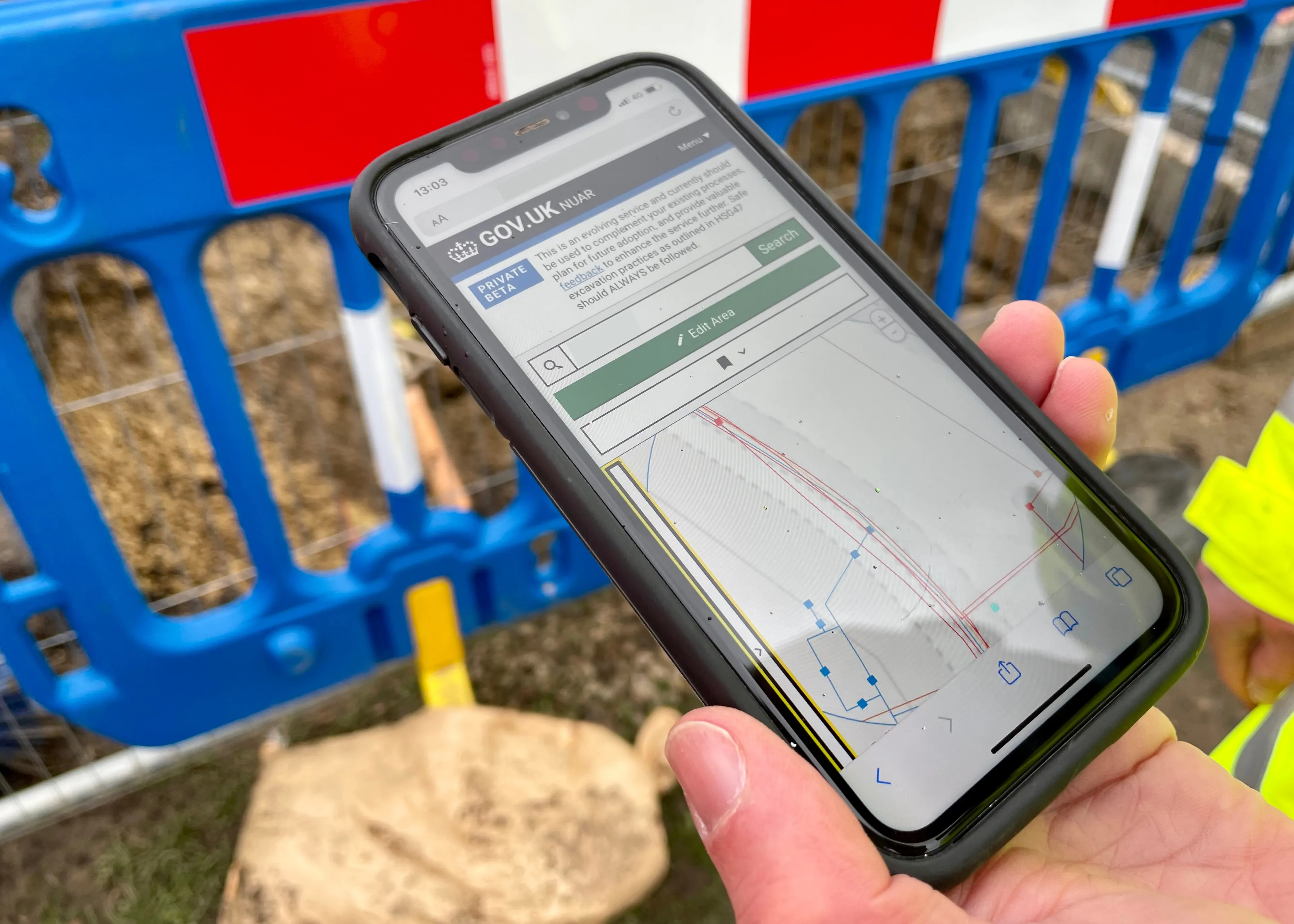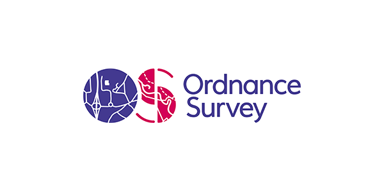Notification of works in NUAR
NUAR will increasingly become an important source of information for those planning and executing excavation works. The NUAR platform is not however intended to amount to instructions or formal advice on risk assessment or Health and Safety on which users should rely. It is therefore important that NUAR integrates with the wider safe excavation ecosystem to ensure that expert engineering knowledge within the asset owner organisations can be utilised to enable works to be carried out as safely as possible.
In response to both asset owner and wider industry feedback, and to enable integration with multiple different backend systems and processes, the NUAR team has proposed a Works Enquiry API specification that could be implemented by any applicable third party wishing to receive enquiry notifications from NUAR. Using the information provided, these systems and processes – sometimes in-house to asset owners, sometimes provided by third party service providers - could carry out the triage, risk assessment and resource assignment activities that they already undertake.
A first iteration of such an API specification has been created and is available to test if this is a suitable mechanism to meet requirements.
Background
The use of utility plans and records is just one element of the planning and safe execution of excavation works.
The Health and Safety Executive (HSE) guidance – “HSG47: Avoiding danger from underground services”[1] emphasises the importance of onsite location and identification of services, safe digging techniques, risk assessment and comprehensive planning, of which obtaining and consulting utility plans and records is one element.
Underpinning the safe excavation process is clear and timely communication between the parties involved, in particular those planning and executing the works, and the owners and operators of buried assets that may be impacted by those works.
The impact of works on buried infrastructure may not be immediately obvious to those carrying out the works. Depending on the nature of the work being carried out, the type of infrastructure in the area and machinery involved, those works may carry a higher risk than anticipated or pose a risk to assets beyond the immediate vicinity.
The owners or operators of buried assets hold the definitive view as to what risks are posed by particular works on those assets, and may have custom guidance for different types of work or different types of asset, or may recommend a focused engagement like a detailed risk assessment or an offer of onsite supervision.
There is general guidance published online for different organisations and sectors, such as versions of safe working guidance T/SP/SSW/22 customised for individual gas networks, for example National Gas[2] and the gas distribution networks, or gas industry guidance IGEM/SR/18 Edition 3 – “Safe working practices to ensure the integrity of gas pipelines and associated installations”[3].
It is important for those planning and carrying out excavation works to be familiar with this guidance, and to keep up with changes as good practice evolves.
Each work site is unique however, and asset owners may have specific guidance or other requirements based on their assessment of those unique circumstances, so it’s important that they understand the Who, What, Where and How of individual planned works so that they can assess if customised advice is required.
Some sectors and asset owners have quite detailed rules that are applied to triage and risk assess individual works to understand which poses the highest relative risk, and to determine what action might be required to reduce that risk. For example, works that are likely to cause vibration may cause a higher risk to certain types of metallic pipe, and impacts like this might also be caused by activities which are ancillary to the main works, such as the transport of heavy plant on the way to the site.
Neil Brammall, prior to his current role as Technical Advisor, Geospatial Digital Service, did a lot of work in this field for the gas sector in the early noughties, codifying rules based on proximity, type of work and categories of asset to carry out that initial prioritisation and risk assessment so that expert engineering knowledge can then be applied in the most effective and impactful way.

NUAR already includes many prominent features to promote productive communication and to signpost planners and excavators to the relevant guidance and asset owners.
For example, asset owners can demarcate assets and sites as being of heightened hazard, sensitivity or criticality, and to specify that these assets should be obscured or even redacted on the map with a signpost to contact the relevant asset owner.
In addition, asset owners may assign “enhanced measures” to individual assets or categories of assets, dictating the additional steps that a party must take before breaking ground, up to and including seeking formal permission to proceed.
Asset owners also have the ability to attach targeted guidance to individual assets or categories of asset, as well as specifying general guidance and disclaimer information applicable to all assets and works.
Promoting clear and efficient communication between users of NUAR and asset owners is an area that Ordnance Survey intends to focus on even more in the run up to NUAR becoming fully operational, with a view to closer integration with existing systems and processes used for asset protection and resource management.
“Proposed Works Enquiry” service
As a result of Industry engagement with asset owners identifying their requirement to know about enquires submitted in NUAR, the NUAR team has published a proposed specification for a “Proposed Works Enquiry” service. This looks to provide a standard mechanism for NUAR to communicate in a consistent manner with other applications and services.
This specification can be found at the link below:
https://github.com/national-underground-asset-register/nuar-enquiry-api-spec
To summarise, the intent is that any application or service which exposes a service that complies to this specification could in future receive information about enquiries that have been submitted in NUAR. Using the information provided, these systems and processes – sometimes in-house to asset owners, sometimes provided by third party service providers - could carry out the triage, risk assessment and resource assignment activities that they already undertake.
The specification includes information about the data requirements to support these activities – the “who, what, where and when” information that allows asset owners to carry out an initial assessment of works and decide on what follow-up actions may be required. It is important to note that the information that will be passed will not include data about actual assets, simply information about the works that are being planned or proposed at various stages of the project lifecycle.
This includes information like:
- WHO: Details of the submitter and the party carrying out the work as appropriate
- WHO: The name and reference of the project being undertaken
- WHAT: Details of the type of work being undertaken – from a list of known activity types, plus a free text description
- WHERE: The location of the intended works, as an actual geometry, plus any description
- WHEN: The phase of the project lifecycle (from an information-only request, through feasibility, right up to planned or reactive works
- WHEN: Any information available about start and end dates for the intended work
- Any other relevant notes and information
The specification also includes mechanisms by which users of NUAR can track the process of any risk assessment by a given asset owner and ultimately be informed of the detailed measures required to proceed with work in a safe manner.
The NUAR team is excited to publish this specification in an open manner, and the opportunities for better integration in the safe dig ecosystem that it presents for NUAR.
This approach also provides an opportunity for a broader discussion in the industry about what information is required for asset owners to make a full assessment of the impact of third party works, and an opportunity to make this exchange of information consistent across all sectors and organisations, regardless of the channel used.
We are keen to continue collaborating with industry, promoting clear and consistent communication between parties, and ultimately safer working practices. If you have any feedback on the API or would like to be part of these user requirement sessions on notification of works, please contact support@nuar.uk.
Article authors: Neil Brammall, Technical Advisor at Geospatial Digital Service and Carsten Röensdorf, Strategic Propositions Manager at Ordnance Survey.
[1] https://www.hse.gov.uk/pubns/books/hsg47.htm
[2] https://www.nationalgas.com/sites/default/files/documents/T_SP_SSW_22.pdf
[3] https://www.igem.org.uk/resource/igem-sr-18-edition-3-safe-working-practices-to-ensure-the-integrity-of-gas-pipelines-and-associated-installations.html

Our highly accurate geospatial data and printed maps help individuals, governments and companies to understand the world, both in Britain and overseas.